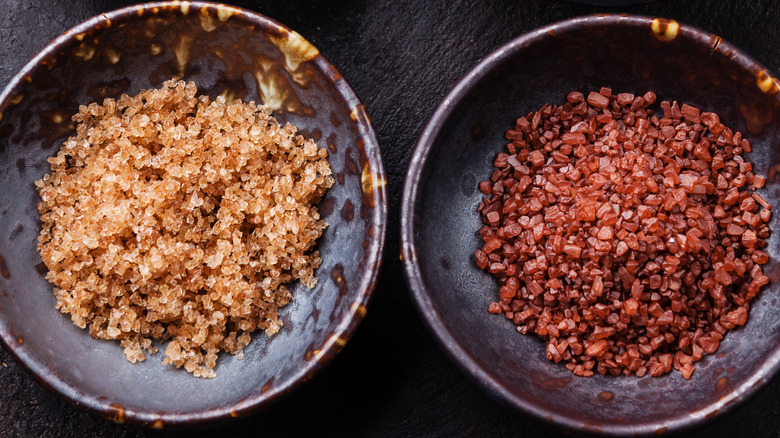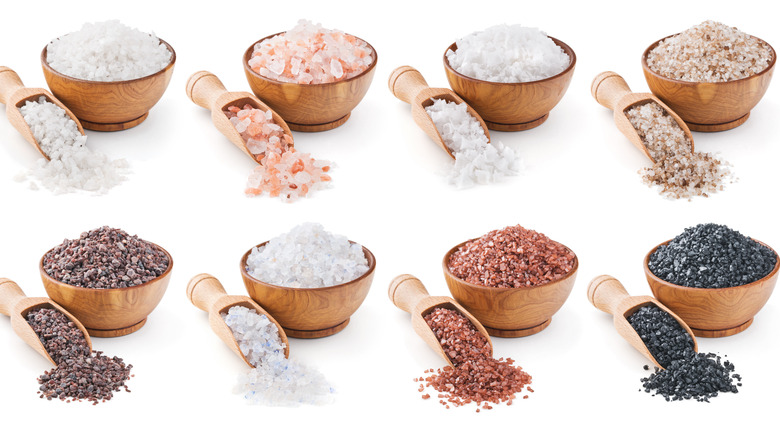The Real Reason Some Salt Is Red
What would we do without salt? This powerhouse of the kitchen is quite literally in almost every dish we make, balancing the sweetness of tomatoes, bringing depth to soups, sauces, and stews, and adding that little pop of flavor to desserts.
While many of us may have grown up with those tall cardboard cylinders of iodized table salt, more recently, we have seen an explosion of interest in home cooking and, along with it, new attention paid to higher-quality ingredients. Over the years, home cooks have swapped out margarine for real butter (via NPR), grocery store bread for homemade sourdough, and so on and so forth. People may also want to consider tossing their cardboard canisters of basic table salt in favor of unprocessed alternatives, which you might find in the form of sea salt as well as salt mined from the earth (via Food Republic).
Natural salts boast a more complex flavor than table salt and a more attractive nutritional profile and occur in colors beyond just white, according to Vervana. For instance, sometimes the salt might be red. But where does that hue come from?
Red salt is all about the clay
When you think of salt, you probably think about white or transparent-looking crystals of varying sizes, right? While many of us grew up on processed table salt, which is white, the truth is that natural salts from the sea and the earth come in a host of colors (via Vervana). These colors can be attributed to the mineral contents of the salt. For instance, more than 100 different minerals can be found in gray salt. In the case of some salts mined from the earth, the color can be owed to the type of rock or soil they're harvested from.
One colorful salt you might have heard of is Red alaea salt. Found in ocean waters above red volcanic clay, this salt takes on a color that ranges from pink to a more intense red (via Salts Worldwide). Red alaea salt is typically harvested from the Pacific Ocean using solar evaporation, and the volcanic clay underneath tinges the salt red as the water evaporates. Hawaii is the primary source of this salt.
Red salt is a great way to get digestible iron, magnesium, potassium, and other useful nutrients and makes an excellent addition to hearty foods such as grilled or roasted meats. So the next time you get tired of plain old table salt, swap it out for red salt and bring an edge to your favorite foods.

